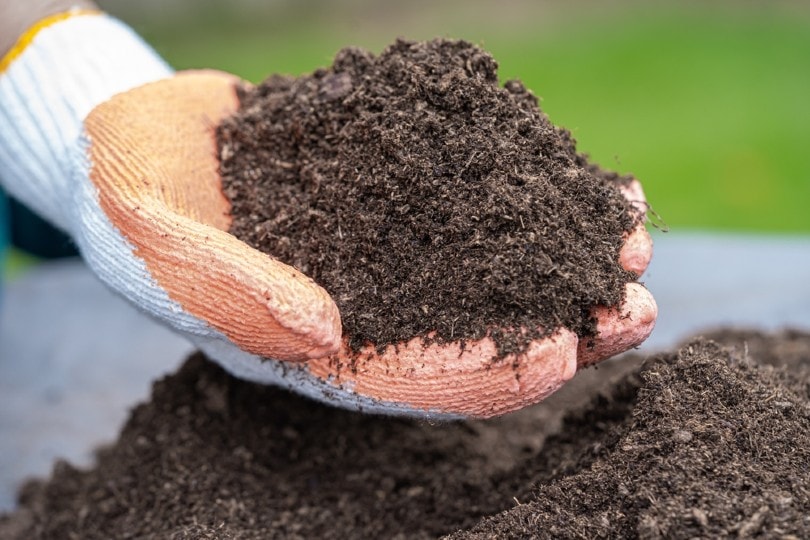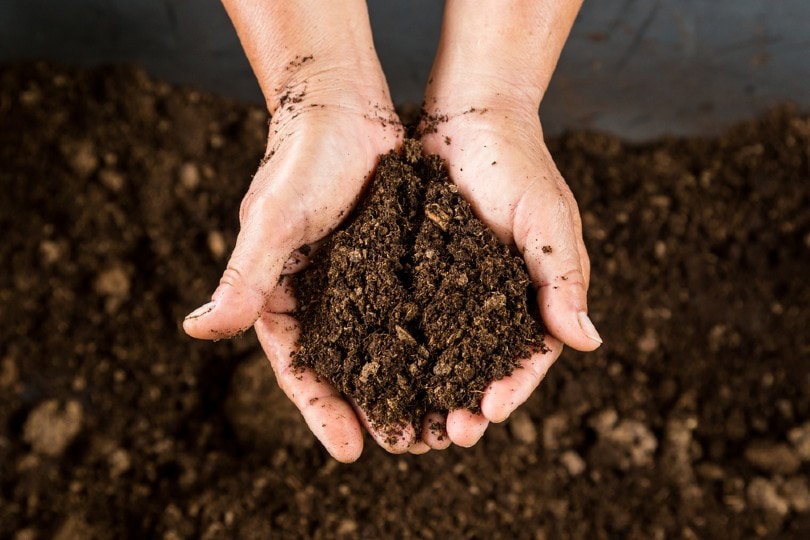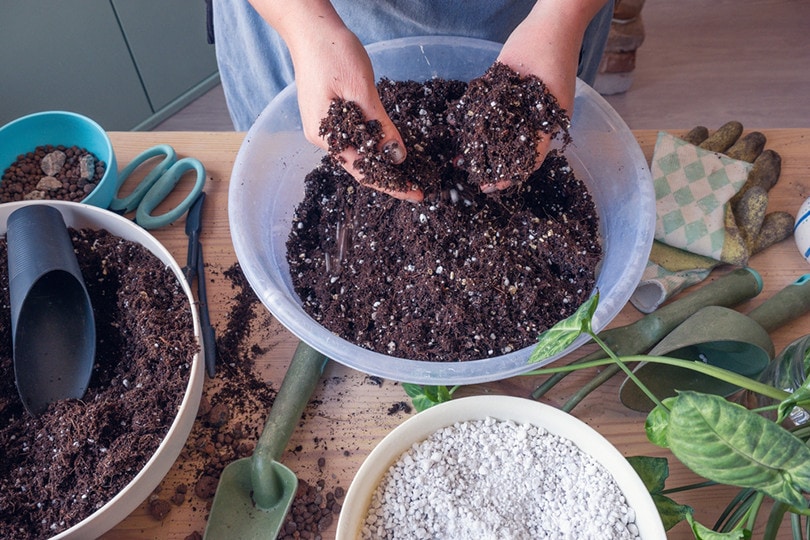Should I Add Peat Moss to My Soil? Pros, Cons, & FAQ
-
Pete Ortiz
- Last updated:

If you’ve frequently heard about a certain material called Peat Moss, you may be wondering what the purpose of this material is. Peat moss is a fibrous substance derived from sphagnum moss and other organic material decomposes for thousands of years. It is used primarily in gardening, for either amending the garden soil or as a seed-growing medium.
There are many benefits to using peat moss, although it is essential to know the right amounts needed. You can read about the proper ways of utilizing peat moss in your garden to achieve the best results below.
What Is Peat Moss?
Peat moss is a soil-amending fibrous material that forms from decomposed living materials in peat bogs. It is made from mostly sphagnum moss mixed with other organic materials. Peat moss can be found in wetlands and bogs in the northern hemispheres, with the largest amounts in Russia. In the US, most sources of peat moss come from sphagnum moss areas in Canada. Peat moss works as an excellent amendment to garden and potting soil because of its anti-bacterial, anti-fungal, and chemical-free properties.
Since this material doesn’t contain any weed seeds and is excellent at retaining water, it is also a great environment for growing seedlings, which are otherwise quite vulnerable to many surrounding conditions.

Using Peat Moss in the Garden
Most gardeners use peat moss in their gardens for amending the soil. This material has an acidic pH level making it a perfect addition to acid-loving plants. This is an excellent acidic alternative to compost, a fertilizer more suitable for alkaline-loving plants. Gardeners use peat moss mainly because only one application of this component is enough to satisfy the plants for years. This material is primarily used for growing seedlings because it doesn’t contain harmful chemicals or weed seeds that can downgrade the growth of plants. It can retain a lot of moisture and nutrients and release them into the soil when needed.
- Excellent material for managing pH levels of the soil, neutralizing alkaline soil and creating an environment suitable for plants that thrive in acidic soil.
- It has great water retaining properties that make it excellent for soil that drains too fast, such as sandy soil.
- Since peat moss is sterile, it cannot be home to bacteria, microorganisms, and pathogens.
- Excellent soil amendment for plants that are susceptible to parasites and diseases.
- Peat moss keeps a spongy texture and doesn’t compact as regular soil does.
- Excellent for hydroponic gardening.
- Peat moss tends to be quite expensive, especially for larger projects. A more affordable alternative can be coconut coir and homemade compost.
- Wrongly adding peat moss to alkaline-loving plants can damage your plants.
- Harvesting peat moss is not an environmentally friendly solution since it is a non-renewable source that takes several thousands of years to form. Additionally, harvesting peat moss releases carbon dioxide into the air.
- Once the peat moss dries, it can cause cracking to the surface of the soil.
How Much Peat Moss Can Be Added to the Soil?
When applying peat moss to the soil, it is crucial to mix the correct ratio of the regular soil and peat moss. The best ratio for soil amending is mixing two parts of soil with one part of peat moss. Another way to introduce peat moss to your plant’s soil is to add a 2 or 3-inch layer of peat moss at a depth of 12 inches and above.
When using peat moss as a seed starting medium, it is best to mix it with perlite in a 50/50 ratio. Another mixture ideal for seed growing is an equal mix of perlite, peat moss, and pine bark.

Plants That Like Peat Moss
Since peat moss has a low pH balance, it is perfect for certain plants, while it can be damaging to others. That is why knowing which plants will thrive with peat moss is essential, especially when growing vegetables and fruits. Some of the most common plants grown in the gardens that enjoy acidic soil are:
- Blueberries
- Azaleas
- Tomatoes
- Camellias
- Heathers
- Hydrangeas
- Daffodils
- Cucumbers
- Sweet corn
- Beans
- Broccoli
Plants That Dislike Peat Moss
If you want to use peat moss in your garden but are wondering whether your plant will enjoy this ingredient, it is crucial to check their soil preferences. Those plants that enjoy growing in alkaline soils won’t thrive with the use of peat moss. Instead, you may want to use compost.
- Daylilies
- Goldenrod
- Lavender
- Columbine
- Geraniums
- Peas
- Cabbages
- Asparagus
- Rosemary
Final Thoughts
Peat moss can make a significant difference when growing your plants, especially those that thrive in acidic soil. This material is excellent at balancing the soil’s pH levels; it contains zero chemicals and has anti-bacterial and anti-fungal properties.
- What is Peat Moss? What is it used for? | Trees.com
- How Much Peat Moss To Add To Potting Soil? – GardenTabs.com
- Mixing Peat Moss with Soil | Pros & Cons Guide – Sumo Gardener
- What Is Peat Moss? Pros and Cons of Using Peat Moss – 2022 – MasterClass
- Mixing Peat Moss With Soil: Is It Necessary? | Eising Garden Centre
- What Is Peat Moss: Tips For Using Peat Moss In Gardens
- How Much Peat Moss to Add to Soil? Step By Step Guide – Webgardener – Gardening and Landscaping Made Simple
Featured Image Credit: Sasirin Pamai, Shutterstock
Contents


